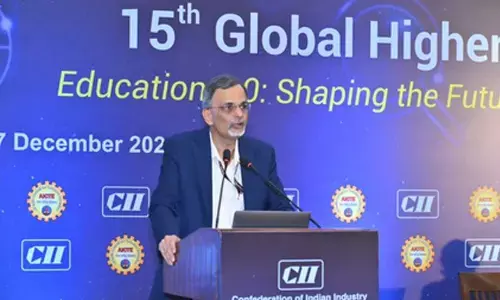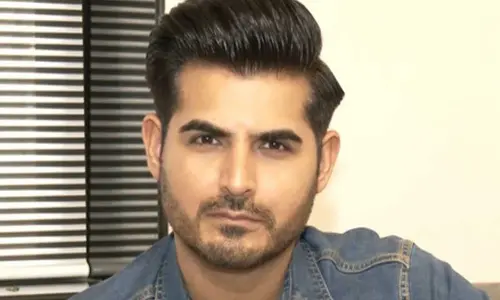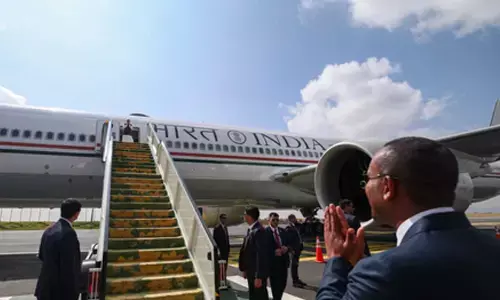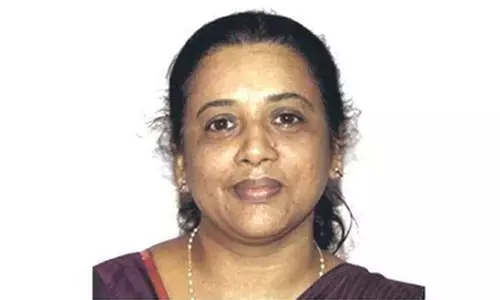Arts preserve indigenous languages and culture, decode with preservation

UNESCO declared the International Decade on Indigenous Languages from 2022-2032 and in the process, a global action team was formed to prepare an action plan for ensuring indigenous people’s rights by preserving, revitalising, and promoting their languages
UNESCO declared the International Decade on Indigenous Languages from 2022-2032 and in the process, a global action team was formed to prepare an action plan for ensuring indigenous people’s rights by preserving, revitalising, and promoting their languages.
Prof. Ramesh C. Gaur, Head, Kalanidhi Division, IGNCA, and Director of the National School of Drama, was nominated to represent our country at UNESCO. Prof. Gaur said that after an in-depth research study, it was found that Assam State has the highest number of tribal languages and lesser-known ones. There are a significant number of endangered languages in the north-eastern part of the country. He further said that the languages below 10,000 people were not recorded in the 1971 census. The report recommends digital preservation, native language education, preparing a language Atlas, and resource and tool building.
Languages play a key role in building relationships with other communities, education, and trade. The Indian constitution recognises 22 scheduled languages, and there are an additional 99 non-scheduled languages. According to the report, the native language of 1.2 million people remains unaccounted for due to the decision not to include it in the census.
UNESCO distinguishes four levels of endangerment in languages, i.e., vulnerable, definitely endangered, severely endangered, and critically endangered. Most of the Sino-Tibetan languages are lesser known; there is no information available on 194 languages, and 108 languages are at some level of endangerment, according to Ethnologue.
Indigenous languages of India show language diversity, and they are often used in literature, music, and film. Indigenous languages and cultures are preserved through various art forms and indigenous artists.
Cultural identity and artistic preservation depend on indigenous languages. Native-language literature frequently has rich oral histories. Indigenous languages give traditional music authenticity and life. To venerate the ancestors, Navajo music uses the Navajo language (Smith, 2019). Screening indigenous language conversation or subtitles helps audiences understand linguistic variety and indigenous narratives. Indigenous artists use art to preserve their languages.
Indigenous languages in literature
Literature in indigenous languages defines culture. Indigenous artists promote languages via poetry, novels, and short stories. Famous Indian novelist Mahasweta Devi depicted indigenous cultures’ hardships and tenacity through indigenous languages. Indigenous painters use their complex languages to share their vibrant cultures.
Indian literature promotes indigenous languages despite centuries of colonisation and globalisation. Native languages represent culture, tradition, and expression. In their own tongue, Mahasweta Devi wrote about tribal conflicts and unity (Robinson, 2018). Literature may promote Indian indigenous languages and their importance.
Mahasweta Devi wrote about tribal wars and social injustice in indigenous languages. In her work,”Draupadi,i” indigenous peoples fight oppression, and women are strong. Poet and writer Thangjam Ibopishak has written extensively. Poetry by Ibopishak addresses Manipuri identity and culture (Devi, 2001; Ibopishak, 2010).
Indigenous languages has an influence on culture and their stories. Indigenous cultures pass down history, ceremonies, and beliefs. Writing in indigenous languages is authentic and cultural. Languages help indigenous musicians and filmmakers retain tradition (Smith, 2018). Indigenous artists promote languages and customs via these mediums.
Indigenous languages sustain culture and diversify literature. Santali and Jharkhadi poets like Mahasweta Devi have described disadvantaged populations’ social and political realities. Indigenous artists sing narratives in their languages. A folk song by Raghu Dixit enlivened Kannada. “Khasi Blood” shows indigenous cultures and their hardships in Khasi. Indigenous artists promote their languages and culture.
Indigenous languages in music
Indigenous languages influence Indian literature, movies, and music. Indigenous musicians have created compelling songs that showcase their culture using their languages. These artists support indigenous languages and dialects in mainstream music. Raghu Dixit sings Kannada to merge his Dravidian origins with current music. Indigenous musicians promote their languages and foster community.
Indian traditional music employs local languages. These languages depict diverse cultural and historical histories with traditional melodies and rhythms. They aid artists’ language retention. Smith (2018) says “Indigenous languages, with their distinct phonetic and tonal qualities, infuse traditional Indian music with authenticity and depth”. Musicians support and preserve indigenous languages.
Folk and tribal music need indigenous languages. Indigenous peoples value these languages for culture and communication. They promote their languages, history, beliefs, and customs via music. Folk and tribal music uses indigenous language lyrics to represent traditional knowledge and community identities. Indigenous artists preserve and revitalise languages.
Many indigenous languages affected modern music. These genres benefit from native languages’ phonetics, rhythms, and emotions. A Tribe Called Red promotes indigenous cultures through techno and hip-hop music in indigenous languages (2016). This enhances indigenous languages’ attractiveness and preservation in modern music.
Literature, music, and cinema in India emphasise native languages. Indigenous writers can communicate their cultural beliefs in their native languages. Indigenous singers add languages to traditional tunes. Indigenous films demonstrate the richness and vibrancy of indigenous cultures using native tongues. Native language artists preserve them for future generations.
Indigenous languages in film
Movies should encourage and protect indigenous languages. Zacharias Kunuk’s “Atanarjuat: The Fast Runner,” shows. This Inuktitut-based film helps indigenous people rebuild their language and culture. Kunuk and other indigenous filmmakers know cinema can preserve language (Nagpal, 2019). Indigenous language films revitalise cultures and languages.
Indian film depicts its rich linguistic legacy in indigenous languages. Some filmmakers have conveyed the spirit of different civilizations utilising indigenous languages. The Ritesh Batra film “The Lunchbox” shows Mumbai’s crowded streets in Marathi and Hindi. Indigenous languages enhance cultural identification and storytelling (Batra, 2013).
Regional and mainstream films value indigenous languages more. Indigenous cinema revitalises culture and language. Filmmakers are more aware of the need to appropriately depict indigenous languages and cultures, urging greater accuracy. “The Lunchbox” by Ritesh Batra illustrates Maharashtrian culture and language in Marathi (Batra, 2013).
Indigenous filmmakers struggle with language promotion. Insufficient money and resources hamper indigenous language filmmaking and distribution (Smith, 2018). The film industry’s focus on major languages marginalises indigenous filmmakers (Jones, 2020). Indigenous filmmakers struggle to promote their languages and traditions locally and internationally without acknowledgment (Williams, 2017). Thus, indigenous filmmakers have several obstacles to promoting their languages through film.
Indigenous Indian languages are used in literature, music, and film, exhibiting cultural unity. Indigenous literature preserves oral and written information. Indigenous artists promote their languages and cultures via song and cinema. These works promote linguistic variety and help indigenous languages survive in today’s globalised culture.
Role of indigenous artists in promoting and preserving languages
Indigenous art preserves languages. Mahasweta Devi depicts indigenous tribes’ rich history and culture in indigenous languages (Smith, 2019). Music by Lila Downs maintains indigenous languages (Jones, 2017). Deepti Kakkar promotes linguistic variety by using indigenous languages in her documentaries (Gupta, 2016). Indigenous artists keep their languages alive in contemporary art.
Folk songs of farmers, lok sangeet and native songs present the life of the people with their challenges in occupation. Indigenous artists encourage and maintain their languages. Indigenous artists show how indigenous languages shape culture via literature, music, and film. Through indigenous-language literature, artists preserve their ideas and experiences.
Indigenous artists and filmmakers preserve languages through beauty, rhythm, and story. Artists maintain indigenous cultures via native languages. Literature, music, and movies provide cultural values and knowledge, which affect language.
Smith (2008) believes indigenous languages in literature allow writers to express their distinctive perspectives and societal worth. Indigenous artists and filmmakers use traditional methods to promote and preserve indigenous languages and urge audiences to appreciate them, according to Grey (2014).
Indigenous artists and language revival have preserved languages. Indigenous artists raise awareness by using native languages in literature, music, and cinema. Indigenous performers use traditional lyrics and melodies to show their languages’ beauty and depth. Indigenous authors and filmmakers demonstrate the cultural value and difficulty of preserving indigenous languages. Indigenous artists help revive languages for future generations.
Indian indigenous languages affect literature, music, and film. Indian artists use several indigenous languages to promote cultural diversity. Kannada, Assamese, and Manipuri literature preserve local customs. Native languages give folk and classical music a unique flavour. Indigenous films promote linguistic variety and indigenous cultures via discourse and music. Indigenous artists preserve languages. There is an immediate need to preserve indigenous art and culture by having a dedicated research team on indigenous languages and preserving them with audio-visual documentation. These languages should be made engaging and interactive by providing people with access to learning and decoding the extinct culture of Bharat.

















